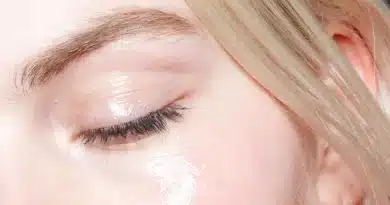Does Your Hair Show Changes in Texture Before Or After it Sheds Or Falls Out?
I recently heard from a young woman who was noticing disturbing issues with her hair’s texture. She was pretty sure that she was suffering from telogen effluvium or TE. About six months before her hair loss started, she had gone on a severe and restrictive diet and she felt that this course of events lead to the drastic shedding that she was seeing right now.
She had read that you can see changes in your hair’s texture while you were experiencing TE, but now that she was seeing some regrowth, she was noticing that the texture of the regrowth hair looked kind of weird as well. She asked me, in part: “when should I see the texture changes? Should they happen before the shedding, after the loss, or during both? Does the fact that I’m continuing to see these changes mean that something is wrong with me or that I don’t have telogen effluvium after all?” I will try to address these concerns in the following article.
Changes In Hair’s Texture And Appearance Can Happen Before It Sheds Out Due To Telogen Effluvium Or Other Conditions: You have to understand that your hair goes through several phases before it falls out. In the growing phase, it is being regularly nourished and this is often when it looks its best and is growing quickly. It will also go into a resting phase and, eventually, a shedding phase. Eventually, as it’s getting ready to fall, it’s no longer being nourished at the follicle and so it can sort of look dull or be flyaway.
And, if what you’re dealing with are normal hair cycles and normal loss, then there are typically not enough hairs in this phase at one time for you to notice any textural changes. But, when you’re experiencing TE or other conditions in which many follicles are changing at one time, then these changes in your hair’s appearance can become much more noticeable.
Changes In Texture After Hair Begins Growing Back: (Which Is Most Commonly Seen In Androgenic Hair Loss Or AGA) The person who sent me the email was very disappointed because she was hoping that when the flyaway hair finally shed out and was then replaced with “normal” hair, she would hopefully then begin to see drastic improvements in how her hair looked. But, as she examined her regrowth, she was very disappointed to see that it was coming in fine and thin. She said that the hair before her shedding looked unruly and was flyway, but the hair that was growing back was also sickly looking and wasn’t thick enough to look any better.
Occasionally, hair becomes thicker in diameter as it regrows. So, if it was too short, this may have been what was wrong. But, if the hair is long enough where you can examine it, then it should ideally look relatively normal and be a normal diameter. When it doesn’t, this can be an indication that some miniaturization and/or inflammation is at play. What is usually happening is that follicles are being negatively affected by androgens or inflammation and therefore the resulting hair is not growing back normally. In essence, the androgens sort of choking out and shrink the healthy follicles.
So, hopefully, this article has shown you that you can notice textural changes both before and after you experience hair loss. What you see will often depend on what is causing the loss or shedding in the first place and how the follicles are being affected along the way. Treatment often depends upon identifying which issue you are dealing with and then either dealing with the trigger (in the case of medical hair loss or TE) or the androgens and inflammation (in the case of androgenic or inflammatory hair loss.) And, there are times when conditions like TE give rise to other conditions like AGA that might have happened somewhere down the road anyway but were hurried by the drastic loss of hair that happened all at once.




